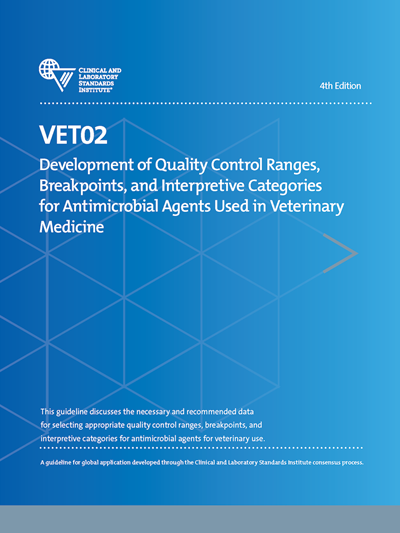CLSI VET02
Development of Quality Control Ranges, Breakpoints, and Interpretive Categories for Antimicrobial Agents Used in Veterinary Medicine, 4th Edition
This guideline discusses the necessary and recommended data for selecting appropriate quality control ranges, breakpoints, and interpretive categories for antimicrobial agents for veterinary use.
Member price:
List Price:Details
Chairholder: Marilyn N. Martinez, PhD
Date of Publication: January 20, 2021
Order Code PDF: CLSI VET02Ed4E
ISBN Number: 978-1-68440-103-1
Order Code Print: CLSI VET02Ed4
ISBN Number: 978-1-68440-102-4
Edition: Fourth
Pages: 88
CLSI VET02 Additional Details
A guideline for global application developed through the Clinical and Laboratory Standards Institute consensus process.

